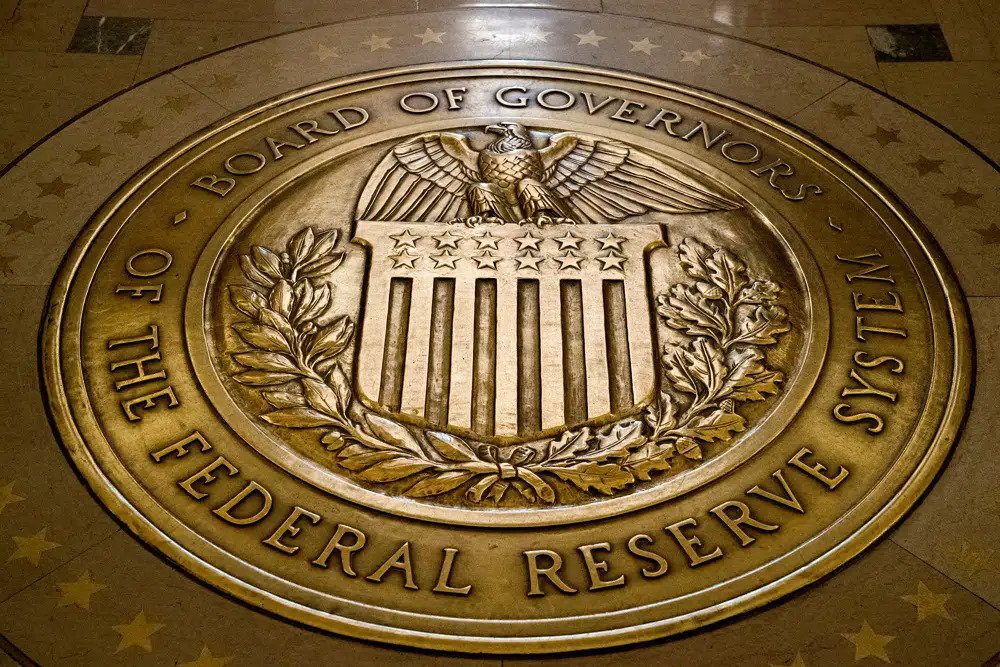|
Getting your Trinity Audio player ready...
|
Edited by: TJVNews.com
Federal Reserve Chair Jerome Powell faces a pivotal and complex decision in the coming days, as the central bank prepares to cut interest rates for the first time since 2020. The decision, expected during the Federal Reserve’s meeting on September 17-18, has stirred debate among economists, financial analysts, and policymakers, according to the information provided in a recently published report in The Wall Street Journal. The question at hand is not just about cutting rates, but how much to cut—should the central bank proceed with a smaller 0.25 percentage point reduction or opt for a more aggressive 0.5 percentage point cut?
Powell’s recent speech at the Jackson Hole Symposium last month left many contemplating the course the Fed will take. His remarks signaled a clear direction toward easing monetary policy, emphasizing the need to monitor emerging risks, particularly in the labor market. The WSJ reported that in his statement, Powell pointed to the Fed’s commitment to data-driven decision-making, noting that “the direction of travel is clear, and the timing and pace of rate cuts will depend on incoming data, the evolving outlook and the balance of risks.” These words underscored the uncertainty surrounding the scale of the initial rate cut, while suggesting flexibility in future actions.
The central bank has held its benchmark interest rate at a two-decade high of around 5.3% for 14 months in an effort to combat persistent inflation. This period of high rates has been instrumental in bringing inflation down significantly, yet the cost has been a noticeable slowing of economic activity, particularly in terms of consumer spending, investment, and hiring. Now, the Fed faces a delicate balancing act: reduce rates to encourage economic activity, but not so much that inflationary pressures reignite, as per the information provided in the WSJ report. The size of the initial cut could reveal more about the Fed’s broader strategy and its tolerance for risks in the current economic environment.
A 0.25 percentage point cut, while smaller, would signal a cautious approach by the Fed. It would reflect a view that while inflation is receding, the risks of reigniting price increases remain significant. Advocates of this smaller cut point to recent economic data that suggest mixed signals about inflation’s trajectory. For instance, firmer housing costs reported in the latest Consumer Price Index (CPI) report have weakened the case for a larger rate cut. The WSJ report indicated that higher shelter prices, which make up a large component of the inflation calculation, could suggest that inflation may still be too sticky to justify a more aggressive cut.
Additionally, a smaller cut could be interpreted as an attempt by the Fed to maintain some optionality in the coming months. By not committing to a larger cut, the Fed keeps the door open for additional rate reductions later in the year if economic data shows further signs of weakness. As Jon Faust, a former senior adviser to Powell, noted when speaking with the WSJ, “The amount of cuts over the next few months is going to be a lot more important than whether the first move is 25 or 50, which I think is a close call.” This perspective highlights the importance of pacing—how the Fed sequences its rate cuts may be more significant than the size of the initial reduction.
On the other hand, a 0.5 percentage point cut would represent a more aggressive move, signaling the Fed’s urgency to support economic activity. The report in the WSJ explained that a larger cut would likely be favored by those who believe that inflation has already peaked and that the bigger risk now lies in a slowing economy, particularly with respect to the labor market. Powell’s speech in Jackson Hole hinted at growing concerns over the potential softening of the labor market, suggesting that the Fed might be willing to act decisively to prevent a spike in unemployment.
Proponents of a larger cut argue that the Fed’s higher interest rates have already done much of the heavy lifting to slow inflation, and now it’s time to shift focus toward ensuring that the economy doesn’t slip into a deeper slowdown. The housing market, often one of the first sectors to respond to interest rate changes, has shown signs of stabilization, but higher borrowing costs have clearly curbed home-buying activity, the WSJ report said. By cutting rates more significantly, the Fed could help alleviate some of these pressures and foster a more sustained recovery in housing and other interest-sensitive sectors.
Moreover, the risks of acting too cautiously could be significant. If the Fed underestimates the extent of the economic slowdown, it could find itself in a situation where it is forced to play catch-up later, cutting rates more aggressively in response to deteriorating conditions. A decisive cut now might help preempt that scenario, allowing the central bank to prevent a sharper contraction in economic activity down the road.
Despite these arguments, officials remain nervous about the risks of moving too fast. The Fed’s ultimate goal is to achieve a “soft landing,” where inflation comes down without triggering a significant rise in unemployment, as was noted in the WSJ report. This delicate balance requires the Fed to avoid both underreacting and overreacting to incoming data.
The decision revolves around how aggressively the Fed should act to support economic growth while continuing to manage inflation risks. While payroll growth showed improvement in August after weaker-than-expected hiring in June and July, layoffs remain low, with jobless claims last week hovering near the same levels as a year ago, according to the Labor Department, as was reported by the WSJ. However, with key inflation metrics still above target and economic uncertainty persisting, the Federal Reserve’s next move is far from straightforward.
The U.S. labor market presents a mixed picture that complicates the Fed’s decision-making process. August’s job growth offers a glimmer of resilience, suggesting that the economy continues to generate employment despite high interest rates. Yet, the revised data for June and July, which showed weaker hiring than initially reported, raises concerns about the underlying strength of the labor market. The persistent low level of layoffs points to continued stability, but the question remains: How much longer can this trend hold if higher borrowing costs start to take a toll on business investment and hiring?
The Federal Reserve must balance these signals carefully. On one hand, the improving payroll growth in August provides some reassurance that the economy is not weakening too quickly. On the other hand, the earlier softening in job growth raises the possibility that the Fed’s efforts to tame inflation may already be constraining employment gains. This delicate equilibrium could tip further depending on how the Fed chooses to move forward with rate cuts.
One critical element of next week’s meeting will be the Fed’s release of quarterly economic projections, which could significantly influence market sentiment. As was pointed out in the WSJ report, these projections will outline how many rate cuts Fed officials expect through the end of the year, with only three meetings remaining: in September, November, and December.
While these projections are not the result of formal committee deliberations, they are nonetheless closely watched by investors. The projections provide insights into the Fed’s view of the economy’s trajectory and the anticipated path of monetary policy. The report in the WSJ also indicated that for markets already expecting over 100 basis points in rate cuts by the end of the year, any projections signaling fewer cuts could lead to a market pullback. This would risk tightening financial conditions—precisely when the Fed is trying to ease them by lowering short-term rates.
A more cautious approach to rate cuts, such as a 0.25 percentage point reduction, would align with the Fed’s usual preference for incremental adjustments. This method allows policymakers to assess the economic impact of their moves over time, providing flexibility to either accelerate or pause future cuts based on new data. A smaller cut would also communicate to markets that the Fed believes the economy remains fundamentally sound, despite some softening in the labor market.
Starting with a smaller cut could help the Fed avoid signaling undue alarm about the state of the economy. If the Fed opts for a 50-basis-point cut right away, it could inadvertently send a message that officials are deeply concerned about the outlook, which might spook markets and trigger a rally in risk assets, as was suggested in the WSJ report. Such a rally could complicate the Fed’s efforts to manage inflation, as surging asset prices could counteract the cooling effects of higher interest rates on the broader economy.
Moreover, the gradual approach gives the Fed more control over the pace of easing. Officials who support smaller, more measured rate cuts argue that it provides time to study the effects of their policy changes and adapt as needed. The key argument here is that if the economy is still in relatively good health, the Fed can afford to take its time in cutting rates, reducing the likelihood of overcorrecting and re-accelerating inflation.





